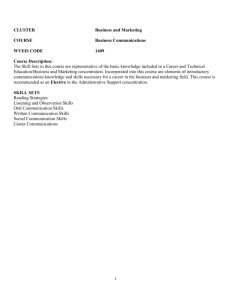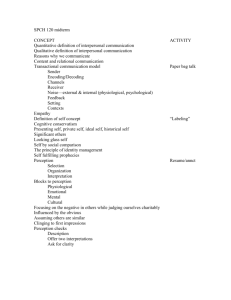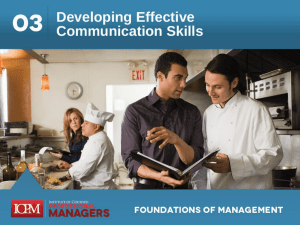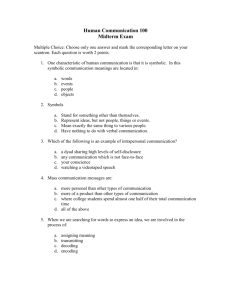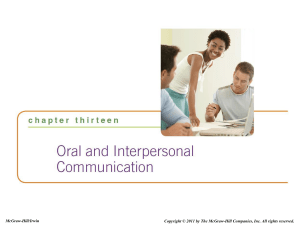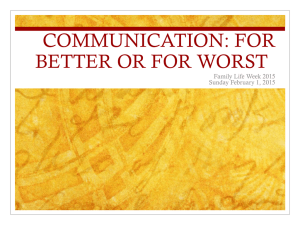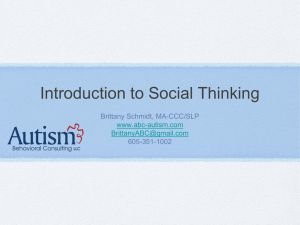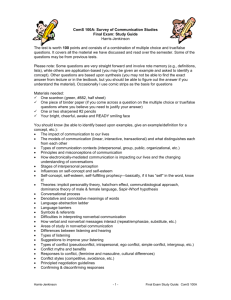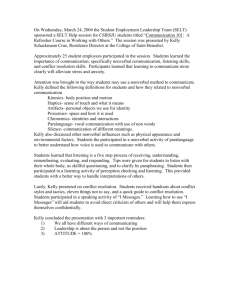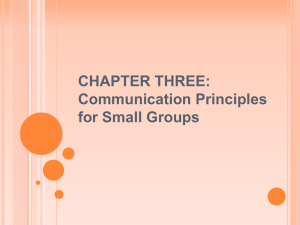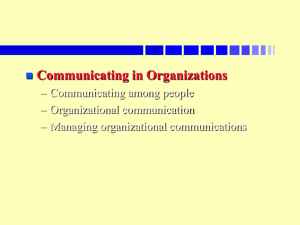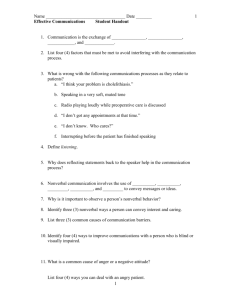Study Guide: Test 1
advertisement
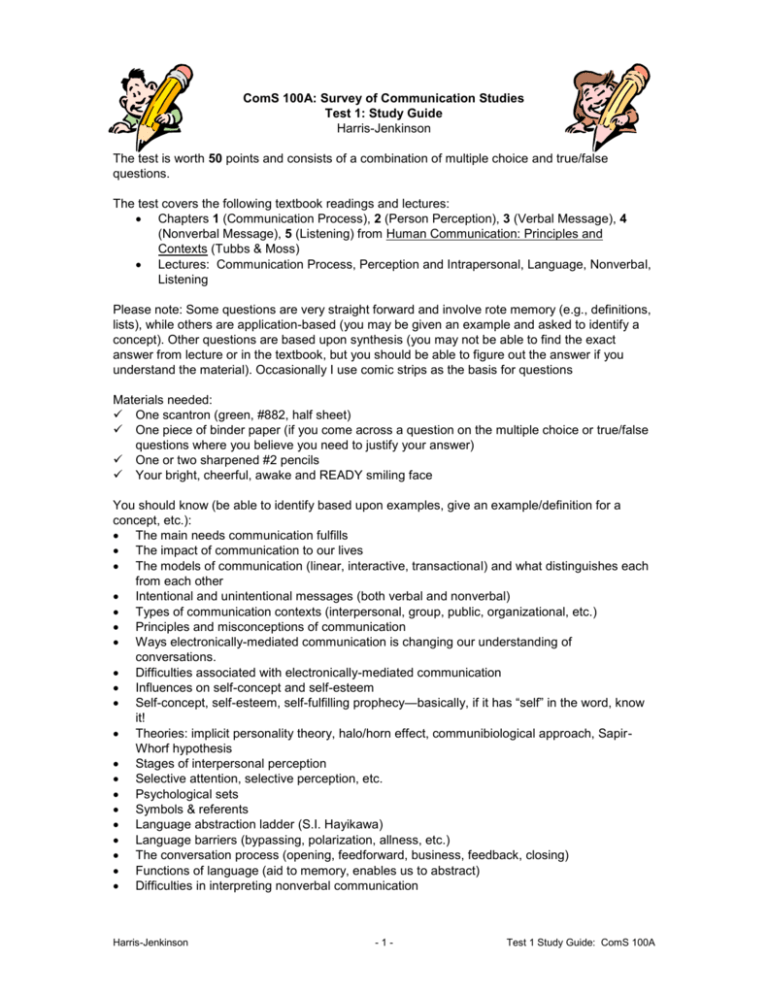
ComS 100A: Survey of Communication Studies Test 1: Study Guide Harris-Jenkinson The test is worth 50 points and consists of a combination of multiple choice and true/false questions. The test covers the following textbook readings and lectures: Chapters 1 (Communication Process), 2 (Person Perception), 3 (Verbal Message), 4 (Nonverbal Message), 5 (Listening) from Human Communication: Principles and Contexts (Tubbs & Moss) Lectures: Communication Process, Perception and Intrapersonal, Language, Nonverbal, Listening Please note: Some questions are very straight forward and involve rote memory (e.g., definitions, lists), while others are application-based (you may be given an example and asked to identify a concept). Other questions are based upon synthesis (you may not be able to find the exact answer from lecture or in the textbook, but you should be able to figure out the answer if you understand the material). Occasionally I use comic strips as the basis for questions Materials needed: One scantron (green, #882, half sheet) One piece of binder paper (if you come across a question on the multiple choice or true/false questions where you believe you need to justify your answer) One or two sharpened #2 pencils Your bright, cheerful, awake and READY smiling face You should know (be able to identify based upon examples, give an example/definition for a concept, etc.): The main needs communication fulfills The impact of communication to our lives The models of communication (linear, interactive, transactional) and what distinguishes each from each other Intentional and unintentional messages (both verbal and nonverbal) Types of communication contexts (interpersonal, group, public, organizational, etc.) Principles and misconceptions of communication Ways electronically-mediated communication is changing our understanding of conversations. Difficulties associated with electronically-mediated communication Influences on self-concept and self-esteem Self-concept, self-esteem, self-fulfilling prophecy—basically, if it has “self” in the word, know it! Theories: implicit personality theory, halo/horn effect, communibiological approach, SapirWhorf hypothesis Stages of interpersonal perception Selective attention, selective perception, etc. Psychological sets Symbols & referents Language abstraction ladder (S.I. Hayikawa) Language barriers (bypassing, polarization, allness, etc.) The conversation process (opening, feedforward, business, feedback, closing) Functions of language (aid to memory, enables us to abstract) Difficulties in interpreting nonverbal communication Harris-Jenkinson -1- Test 1 Study Guide: ComS 100A How verbal and nonverbal messages interact Areas of study in nonverbal communication (proxemics, chronemics, haptics, etc.) Differences between listening and hearing Suggestions to improve listening Reasons we listen ineffectively (barriers to listening) Types of listening Steps in the listening process Definitions or descriptions of: Stereotypes Dichotomous terms Primacy & Recency effects Euphemism Nonverbal communication Polychronic / monochronic Metacommunication Harris-Jenkinson -2- Test 1 Study Guide: ComS 100A
